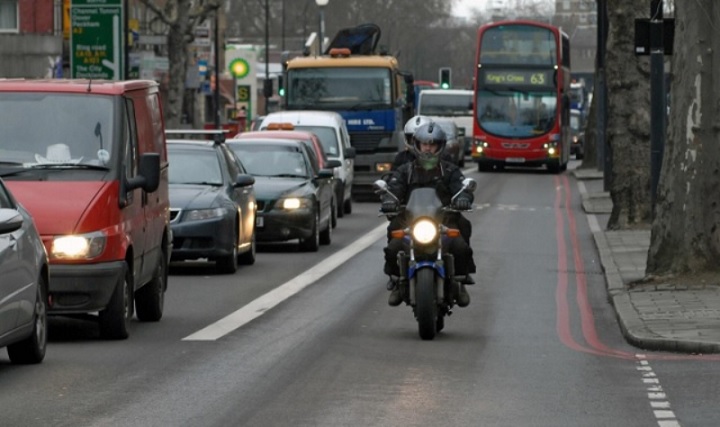
London is the most dangerous region for motorcyclists in the UK, analysis of Government data suggests.
Analysis of 2017 collision data, carried out by Swinton Insurance, found that nine of the UK’s 10 most dangerous roads for motorcyclists are located in Capital – with the A23 in Lambeth topping the list for a second consecutive year.
The only road outside London in the top 10 is the A483 in Powys, Wales, which took seventh spot for motorbike collisions.
The top 10 most dangerous roads in the UK are:
- Lambeth A23
- Brent A404
- Hackney A10
- Islington A501
- Hackney A107
- Tower Hamlets A13
- Powys A483
- Islington A1
- Wandsworth A3205
- Wandsworth A3
The analysis also shows that despite a 5% decline in the number of collisions involving motorbikes nationally between 2016 and 2017, the figure in London rose by 8%.
The West Midlands was the most improved region, with 433 collisions in 2017 representing a 17% year-on-year fall. In comparison, there were 3,639 motorbike collisions in London that year.
Dan Agate, Swinton Insurance, said: “We feel that it’s important to alert motorcyclists of the most dangerous roads in the UK and the places that they should approach with more caution.”
Difficult to make ‘meaningful comparison’
The London Road Safety Council (LRSC) says while the volume of traffic in the Capital makes it difficult to draw comparisons to other regions, it has identified motorcycling as a casualty reduction priority.
Mark Bunting, LRSC press officer, said: “Because of the sheer volume of traffic using London’s roads it is often difficult to make a meaningful comparison of casualty rates on the Capital’s roads to individual sites outside London.
“You would probably need to calculate a casualty rate per mile based on the number of miles travelled by each transport mode.
“That said, the LRSC has identified motorcycling as a priority, and we have taken over the running of the 2Wheels London campaign to raise awareness and provide safety advice to riders.
“We recently ran a training course for London’s road safety officers on how to engage with riders and will be launching a new social media based campaign at our AGM in July.”
The 2Wheels London project works in close partnership with London boroughs and businesses across the Capital to provide PTW riders with useful safety information and advice.
It would be interesting to learn whether there has been any analysis of this data with regard to bus lane access. in other words, what proportion of these collisions have occurred in bus lanes and how many where motorbikes share the road with general traffic? In common with most in MAG I believe motorcyclists are at greatest risk when sharing unrestricted road-space, when other motorists’ attention is all over the place (or often only on the back of the vehicle in front) and biker presence is easily missed. Data of this kind could be helpful in encouraging Councils around the UK to permit powered two wheelers to share bus lanes with buses and cyclists in the interests of safety and congestion reduction.
Tom Lonsdale, HUDDERSFIELD
0
The knee jerk reactions are disappointing here. The reaction is not to look at the environment, but once again simply focus on changing rider behaviour. There seems to be the suggestion that if you swapped all the riders in London for riders from the West Midlands thare would be a reduction in collisions in London. That is a ridiculous starting point in my view. The sensible approach is to look at the wider picture of the environment in which these collisions take place. There is no denying that changing behaviour is important, but, all things being equal, it will have the same impact at any location. The differences in London compared to West Midlands can only be the result of differences in the riding environment. This includes the infrastructure design, density of traffic etc. These would be a better starting points in tackling London’s issues.
Colin Brown, West Midlands
+4